Did anyone else just hear Gary Lineker refer to the Swansea City manager as Brian Laudrup instead of the Dane’s brother Michael Laudrup?
Just clocked it on match of the day.
Suppose everyone makes mistakes…
Did anyone else just hear Gary Lineker refer to the Swansea City manager as Brian Laudrup instead of the Dane’s brother Michael Laudrup?
Just clocked it on match of the day.
Suppose everyone makes mistakes…
Although Ormskirk will always be where the soul of this project was forged, the OBC has ventured south and is currently setting itself up in Swindon.
Our aim is to be the first real ale brewing company in Old Town.
Watch this space…
Over at the Craft Beer and Country Wine brewery the Ormskirk Brewing Company has been working on some exciting new ideas…
For your next big party you now have the option of ordering in funky alternative drinks whether organic, foraged or from fruits straight from the tree.
See the official website for full details or their ‘behind the scenes’ laboratory for the ins and outs!
In Nov 2011 Pulp Fusion Craft Wines and Ales was incorporated within The Ormskirk Brewing Company – a local winery and nano-brewery with a contemporary take on classic recipes and products.
Earlier in 2011 I started Pulp Fusion where I am gradually up-scaling from my homebrew hobby into a small business providing Natural & Locally Crafted Country Wines & Real Ale.
The focus is on new craft wines such as Elderflower Sparkling and table wines such as Rhubarb. Rather than go into detail here you’re best off visiting my Pulp Fusion website by clicking here.
Keep an eye out at local Farmers Markets or similar events.
“Pulp Fusion Craft Wines – There’s more to wine then grapes.”
Did you know you can personalise your QR Code?
The QR code is a 2D barcode that can link people direct to your website. Try scanning the image below and it should pop up with my Buggslife.com URL:

Buggslife QR Code
You just need a barcode scanner which you can get as an app on your smart phone. I use the app “Barcode Scanner” based on the open source ZXing Barcode Library on my HTC Desire S phone.
Anyway, to personalise your QR code just open the image in any editing software (e.g. Photoshop) and you can change the central portion. Be careful with the edges and don’t cover up the corners as they are critical. Then test it out.
A nice touch to an otherwise dull looking black and white square.
I was interested whether this period of recession – with fewer career opportunities for fresh minds – would spark a wave of artists after what felt like a long spell of numbness in a political regard.
Photo Poem: “What Zedong Said…”.
Less than 12 months after writing it I can already see tangible reactions, looking back after the exhilarating Arab Spring (Arab Dawn?) where entire nations have stood up against their various regimes and with more ‘settled’ nations seeing huge protests from their youth against Austerity.
Of course I didn’t predict any of this – I had more questions than answers. Still, I think it is a time rich in the emotive drivers that fuel new art and I look forward to the artists’ emergence, in whatever form they are taking.
I used the Working Title “What Zedong Said…” whilst writing the poem…in fact, I wrote it during one day mostly whilst riding my bike along my normal countryside route to work…as several long text messages on my mobile phone!
Back to the title, it was simply in reference to a quote by Zedong Mao (Chairman Mao):
“There is in fact no such thing as art for art’s sake, art that stands above classes, art that is detached from or independent of politics. Proletarian literature and art are part of the whole proletarian revolutionary cause.”
I find this statement very powerful and it sparked my mind at the perfect time when I read it. I am proud of this poem, although I understand technically it may well be useless…either way, you can find it via this link:
Photo Poem: “What Zedong Said…”.
Being a working title I had intended to go back and change it afterward but ended up quite liking it – although it being so unlinked to the poem’s topics it may have an alienating effect on the reader…
Enjoy.
A special country wine has recently emerged from the Brew Centre…
Pendle Hedgerow Wine is made from fruits sourced from the Ormskirk area and includes:
Three versions of the wine were created, one Dry at 12.7% vol and one sweet at 14% vol – both of which are bottled and have had 6 months conditioning. The third is a special batch that has been batch maturing for over a year and will be ready in 2012.
Cannot wait…
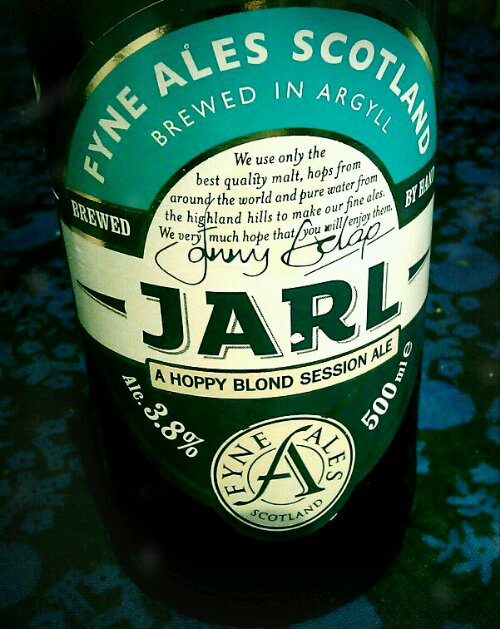
A quick one – I just have to mention this beer as it is one of the best ales I have had in ages.
I stopped at the small brewery Fyne Ales whilst driving back from a canoe holiday in Scotland last month. Having sampled every beer they offer I picked 3 bottles of my 4 favourites.
A month on I opened the first one: Jarl and am sooooooooo impressed.
If you are ever driving by Loch Fyne, I recommend you stop!
Dandelion & Burdock Beer:

I started fermenting a new batch of root beer from dandelion and burdock last night.
The recipe is extremely simple…
First go forage for some dandelion root and make somebody happy by removing a gardener’s more hated weed. Next forage for burdock root – not so obvious but a quick read up and you’ll be able to pick it out in a hedge row.
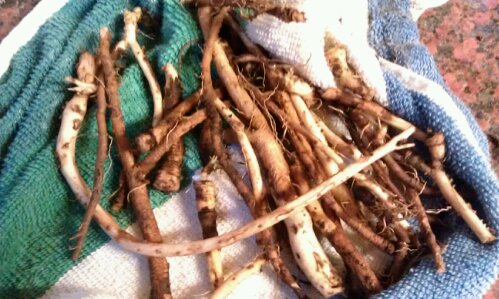
Here’s what I used:
15 dandelion roots
3 decent sized burdock roots
A small chunk of ginger root (mine was about 5cm as was all I had left)
700g sugar
dash of honey
7L water
Method:
Scrub the roots to remove dirt, then boil in the biggest saucepan you have – mine is only 1 gallon but you add extra water later. Boil all roots including ginger for an hour.
If you are already into homebrew you’ll know how important hygiene is – ensure everything you use from now on has been sterilised either with boiling water, bleach or a sulfide (campden powder/tablets).
At the end of the boil add the lemon juice and any other ingredients such as honey.
You need to cool the brew now to a temperature you can ferment at – preferably around 30°C (luke warm).
Add the brew to a fermenting bucket and top up with water (pre boiled and cooled is ideal).
Pour in the sugar. If you have a hydrometer use it to check the specific gravity (sugar content) although you already know this more or less since the ingredients for this brew are so simple. Mine was S.G.=1.035 which will give an alcohol strength of about 4.3% when done. More sugar = more alcohol.
Now you can either add the yeast to the bucket or preferably make a yeast starter (see yeast packet) and add that.
Ferment for about a week or until fermentation has stopped (no more bubbles rising to top) with a lid loosely covering bucket.
That’s it for the brewing at minimal cost. The sugar costs around 50p, the rest is minimal and you end up with up to 14 half litre bottles.
Bottling: first sterilise the bottles. Next you’ll want to prime them for some fizz. This is simply adding a small amount of sugar so that fermentation restarts in the bottle building up a little carbon dioxide gas.
Need to be careful here not to over do it as you’ll end up with exploding glass.
Add about a teaspoon (5ml) per litre either to each bottle or as an equivalent amount to the whole batch before syphoning into bottles.
Glass bottles now need to be sealed using a metal crown (cap) or using the swing tops.
Using plastic bottles for your first brew can be wise as you can squeeze the bottle every so often to get an idea of pressure build up. If you made a mistake you can unscrew the cap slightly to let gas escape. Not ideal but a safe bet for beginners.
I made this a couple of years back using autumn roots which are usually recommended but couldn’t wait this season so the current brew is a Spring batch.
Enjoy.
I made it as a finalist in the BeenThere monthly travel photo comp for April 2011.
The theme was Weather and, although I didn’t win, the winner and runner-ups were worthy victors.
My entry is below:
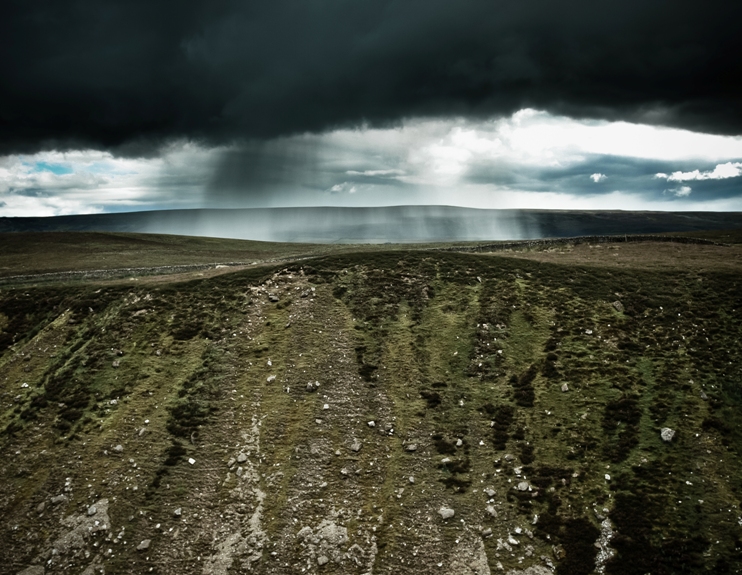
The photo also appears in my photo galleries at Buggslife Photography.
I’ve added the little Quote of the Day widget to the top right of this blog – I type up a growing set of chosen quotes, ones that ring true to me, which are then picked out at random when the blog is loaded. Here are the newest ones:
Geek note: this site uses the nice widget called XmasB Quotes.
A genuine classic.
This was started during my early days of homebrew adventures and provided a strong motivation to keep going.
It is made from organic ingredients:
The Rhubarb was grown in my own garden and the plums were local. A lot of love and care went into this early wine and, luckily, it paid dividends.
With a pale, clear pink colour and an ever so smooth taste this country wine is a tad too easy to drink at 10.3 % vol. Indeed in the early days many a bottle was finished before a secret stock was hidden away for future generations. This stock is now back and ready for a lucky few…
Mr David Bugg and Mrs Clare Bugg (formerly Miss Clare North) finally tied the knot on 9th February 2011 on the spice island of Zanzibar. We spent 2 weeks away with time in the charming Stone Town before heading to Fumba Beach Lodge for the wedding. Just before the ceremony a tropical storm hit us (apparently an effect of the big typhoon over Madagascar) with the wind kicking up waves and sand and a big ominous dark sky edge closer over the ocean.
We battled through it all – in fact our 7 guests bore the brunt of it since we had some cover under the palm leaf archway with Father Charles.
Still, everybody came up smiling at the end and the celebrations continued into the evening over a superb private meal. The Fumba staff were fantastic; Natasha was particularly attentive and definitely made the day extra special.
A couple of days later Clare and I went over to Pongwe on the east coast to see the typical ‘post card’ type beaches Zanzibar is famous for. The colours of the sea did live up to expectation (see photo):
One of my personal highlights was the next stage of the trip on Chumbe Island (see this link for details on their big conservation project). The snorkelling around the island was pretty special with great varied gardens of coral and a huge variety of colourful reef fish as you would expect with quality tropical snorkelling sites. What stood out for me though were the big shoals of mini fish you could swim through, the many Hawksbill turtles we saw and also the odd impressive jellyfish. See a few photos below taken on my underwater compact camera (Canon Powershot D10).
Chumbe is a great eco island even without the snorkelling though; it’s covered in a low dense bushy forest so there is even some good birding and the ground itself moves with the scuttle of hermit crabs.
The project has built several funky bungalows that proved their worth living through a storm whilst we were there without any issues at all.
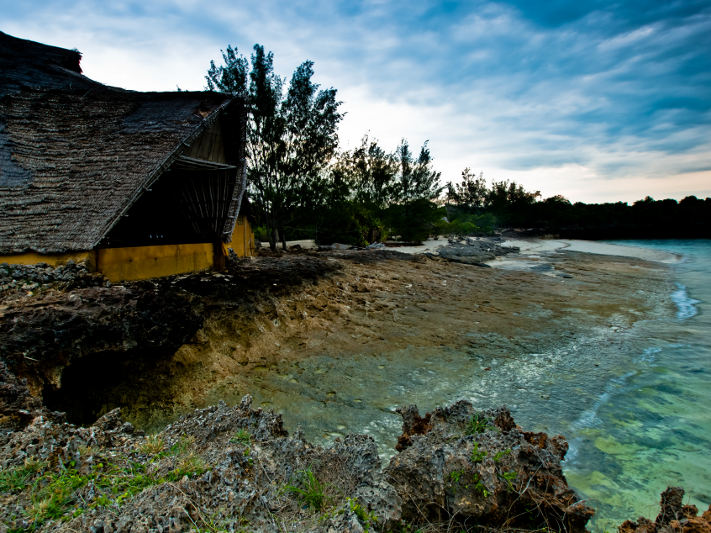
So this represented the bulk of the pre-wedding, the ceremony day and our honeymoon on Zanzibar with just another night back in Stone Town. This town blew me away – it overloaded my visual senses with its aged buildings brimming with character and its cramped winding backstreets. we got lost several times and were always happy to have to meander our way back to somewhere we recognised. Despite several long powercuts and being amongst the people and their day-to-day lives I sensed no danger as a tourist and felt a positive vibe about town.
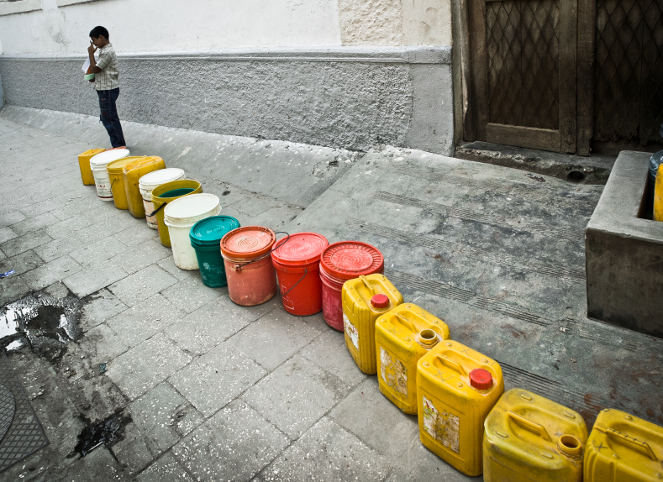
The next stop was Selous game reserve in the south of Tanzania for a few days Safari – an ideal ending to our honeymoon for two nature lovers…
See the full set of photos here.
Selous Game Reserve – on paper Africa’s largest protected wildlife reserve. This is where we chose to polish off an unforgettable wedding/honeymoon trip.
Staying at Lake Manze camp we had just 3 nights to explore as much as possible. Although Selous covers more than 5% of Tanzania’s total area, in reality the majority is a hunting reserve and just a relatively small area north of the Rufiji river is kept for ‘photography hunting’ or eco tourism.
From the small Coastal aeroplane I spotted my first giraffe and within the first 20 mins of the gradual drive from the airstrip toward camp my wildlife spotting senses were already in overload. Plenty more Giraffes and Impala seemingly in a any view you chose from the jeep; and it was the view that struck me hard…
Usually our nature driven trips have been to tropical rainforests and we are well used to have no more than a couple of metres visibility both left and right with the only distant view being ahead down the path your are walking (and even that depends on how well and straight the paths have been cut). So sitting in an open 4×4 Landrover and looking not just forward for a km or more but all around to both sides and seeing mammals off on the horizon – this was a whole new ball game in our mildly obsessive wildlife watching world.
What stood out to me as much as the game viewing was the birdlife, not just in quantity and variety but in beauty. the Rollers and Bee-eaters have such striking colours but then also the 5 species of Kingfisher we saw, the number of raptors (from Osprey to Sea Eagle, falcons and so many vultures) and even the common passerines were interesting; perhaps not surprising being our first ever visit to Africa so all was pretty new and fresh.
One of the main reasons we chose Selous over, say, the Serengeti or Ngorongoro, was for the relative peace and quiet of the reserve. During most drives we only saw up to 2 cars passing by and never another vehicle whilst watching an animal – the one big exception being on the final evening when we went out to observe a pride of lions with 2 males (brothers). In that instance it probably resemebled the hoards that you hear about in Kenya or North Tanzania since we had 3 or 4 jeeps at one time in the same area.
The two the major attractions of Lake Manze camp were:
1) It is situated on the lake so you can mix up the activities by taking boat safaris. This really gives you variety; the birding was superb and the viewpoint is always different from the water.
2) The camp is not fenced, you are staying in extravagant tents which means that wildlife can, and does, come right up to.
As well as having Impala and Monkeys within 10m we also had two special moments. I never realised how silently a big elephant could sneak up on you! One lunchtime we were relaxing on the tent porch when he appeared through a bush. As he came closer we went inside the tent and watched through the mesh window as he virtually brushed up against the canvas! The Masai do look after you but hadn’t noticed this one so we just enjoyed the experience and let the elephant get on with his stroll. In the bush everybody and everthing makes way for the elephants.
The other moment was during the night of a full moon; in the middle of the night a storm had passed over with a typically heavy tropical downpour. Afterwards I had been awoken again but by a different sound, a sound of munching. As it approached I could see moonshine but could not distinbuish its outline until my eyes adjusted to its great size and traced the outline of a large bull hippo under the moonlight! He edged closer, regularly tearing huge amounts of grass and munching away. Imagine the sound a cow makes when tearing up grass, now amplify that 50 times. We watched this hippo as it stood as close and can be just a metre fromt he tent side. Everytime we made a slight rustle it would stop, listen out and everntually carry on his midnight feast. Everybody always says how dangerous they can be and having seen them running on dry land the previous 2 days I could well believe it.
Our first time in Africa, our first Safari and at the end of our honeymoon after a special 2 weeks that included a wedding in Zanzibar. A great way to polish of a great trip for 2 newleywed nature lovers.